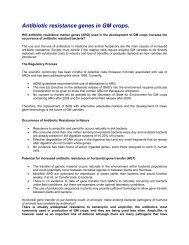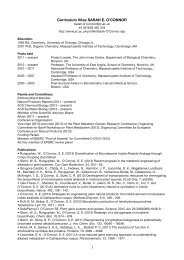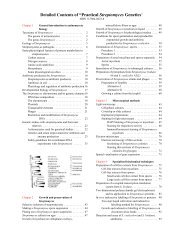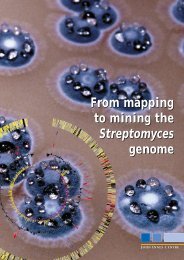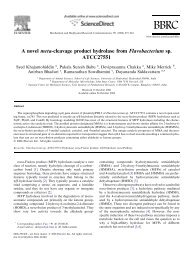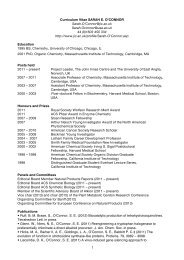Economic Impact brochure - John Innes Centre
Economic Impact brochure - John Innes Centre
Economic Impact brochure - John Innes Centre
Create successful ePaper yourself
Turn your PDF publications into a flip-book with our unique Google optimized e-Paper software.
More crop research in the pipeline<br />
Adapting crops to climate change<br />
Crop productivity is critically dependent on optimal<br />
climate. Plants respond to adverse conditions by<br />
stopping growth, leading to reduced yields and major<br />
losses to farmers.<br />
JIC scientists are uncovering the mechanisms by which<br />
plants respond, and hope to be able to alter these<br />
responses so they can continue to grow in suboptimal<br />
conditions.<br />
JIC scientists have also discovered how plants respond<br />
to over-wintering, a key agricultural trait that induces<br />
flowering the following spring. Flowering is the most<br />
important process in plant productivity. The detailed<br />
understanding of flowering built by JIC scientists in the<br />
past 20 years provides a strong foundation for adapting<br />
crops to an increasingly uncertain climate.<br />
Recently, JIC scientists discovered that plants have<br />
a built-in “thermometer” gene that controls plant<br />
responses to small temperature changes. Further<br />
research in this area will provide crucial information for<br />
breeding crops able to cope with changes in growing<br />
seasons, temperature and water availability.<br />
Making better bread and beer<br />
As well as being a major energy store in plants, starch<br />
has many uses for humans. It is the main carbohydrate<br />
of nutritional importance in the human diet. In cereal<br />
grains, starch affects the baking quality of flour and the<br />
malting quality of barley for brewing. Pure starch from<br />
flour is also used in processed foods, paint, glue, paper,<br />
cosmetics, and biodegradable packing and plastic.<br />
Each of these applications needs starches with different<br />
properties, but commercially grown wheat and barley<br />
contain starch with rather uniform properties.<br />
Scientists at the JIC and the National Institute of<br />
Agricultural Botany (NIAB) have discovered wheat and<br />
barley lines from across the globe with starches of<br />
different physical properties. They are working with<br />
end users and breeders of wheat and barley to<br />
exploit commercially interesting lines..<br />
Enriching crops<br />
Scientists at the <strong>John</strong> <strong>Innes</strong> <strong>Centre</strong> and The Sainsbury<br />
Laboratory are developing improved potato lines<br />
with elevated levels of health-promoting flavonoids.<br />
Flavonoids are natural antioxidants that are better known<br />
for their abundance in berries and other fruits.<br />
The improved lines will not only have added consumer<br />
appeal due to the health benefits, but they will improve<br />
the resistance of potatoes to late blight, giving them<br />
appeal to producers. A spin-out company called Norfolk<br />
Plant Sciences will exploit their global potential.<br />
This research follows success in increasing anthocyanin<br />
levels in tomatoes. The tomatoes increased the life<br />
expectancy of cancer-prone mice and have received<br />
worldwide attention from the media and from industry.<br />
The anthocyanins gave them a rich purple colour.



